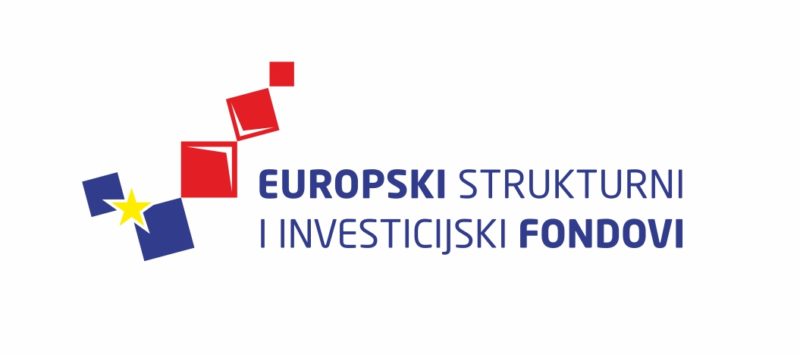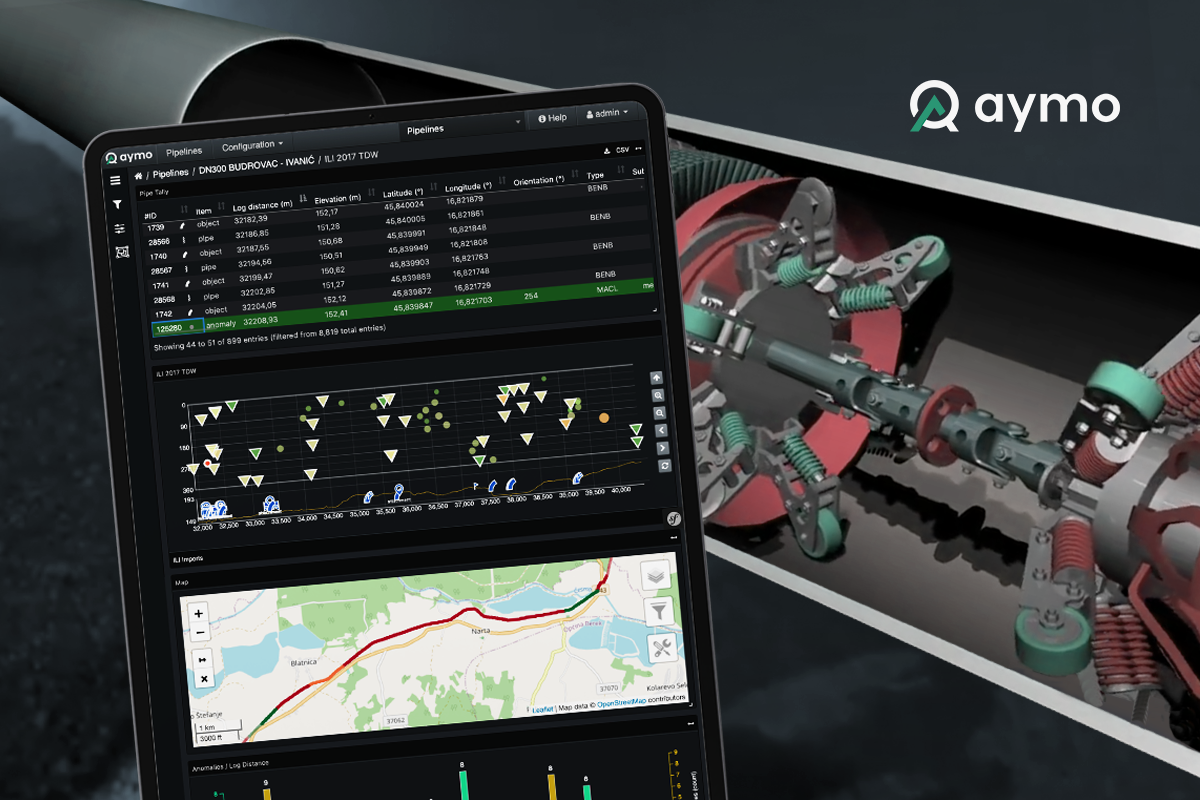What is MFL pipeline inspection?
Safety and high efficiency are main and basic requirements for the transport of oil and gas through the pipeline. Leaks that occur on the pipelines can result in erosion, abrasion and unexpected damage. Whereas most oil pipeline systems are either laid in the ground or underwater, inspection is quite challenging. However, the proportion of damage can be detected by various pipeline inspection methods.
Nowadays, there are systems for automatic control of industrial processes and oil pipelines, that can detect any severe and significant damage in the oil pipeline system using various sensors. By means of such systems, it is possible to detect the failure of certain parts of the system, such as pumping stations, valves, blockages, cracks in oil pipelines and oil spill. Still, it is not possible to detect corrosive metal loss or minor geometric deformation (ovalization) to the pipes. Unique technologies and methods are used to detect such defects.
Magnetic flux leakage (MFL) is the most popular pipeline inspection method. It is also one of the oldest methods available on the market since 1969. Over the years, several generations of MFL systems have been developed, each new with significantly improved performance.
MFL technology has revolutionized the industry and greatly reduced costs, providing a more accurate overview of pipelines, tanks, and more effective asset protection. This method uses magnetically sensitive sensors in order to detect magnetic field leakage on the inner and outer surfaces of the pipeline.
In this article, you will learn how to use a magnetic flux (MFL) measuring device in order to detect and locate defects in pipelines and tanks around the world.
Types of devices for pipeline control and cleaning
Checking the condition of the pipeline is performed using “in-line” tools and devices, ie using PIG devices (cleaners) to control the condition of the pipeline (Pipeline Intervention Gadget). Cleaners are used to clean the pipeline, to separate various fluids within the pipeline, track and record the condition of pipelines.
For the control of oil pipelines, the so-called “smart” cleaners are being used. Depending on the type of damage, that needs to be determined, and the principle of measurement, several devices can be used to control the condition of the pipeline:
MFL (Magnetic Flux Leakage): electromagnetic device for controlling the condition of pipelines, cracks and loss of pipe wall material.
EMAT (Electromagnetic Acoustic Transducer): acoustic device for monitoring the condition of pipelines. This technology is used to detect pipe wall material loss, damage to the protective coating of the pipe and to distinguish different types of coating.
Caliper: The caliper is used to detect all geometric deformations (ovalization) to pipelines, to give their exact location via GPS and to collect data on the size and shape of all geometric changes in the pipe.
What implies Magnetic Flux Leakage?
Magnetic Flux Leakage (Magnetic Flux Leakage, MFL) is a magnetic non-destructive testing technique used to detect corrosion and pits in steel structures, most commonly pipelines and tanks, and to accurately measure corrosion damage. Magnetic flux is determined by the number of magnetic lines of force placed in a magnetic circuit.
The Magnetic Flux Leakage (Magnetic Flux Leakage, MFL) method and devices for determining the change in the geometry of the pipeline are used in in-line inspection (ILI).
The principle of operation is based on the induction of a magnetic field in the tube plate scattering between the two poles of the magnet. Anomalies are recognized by the scattering of magnetic flux in the wall. The larger the magnitude of the irregularity, the greater the magnetic flux dissipation.
The dissipation of the magnetic field depends on the degree of magnetization of the wall, steel brushes, pipeline material, the distance between the two poles of the magnet, the speed at which the device moves through the pipeline, and other factors.
How does the MFL pipeline test method work?
High efficiency and security of pipelines and energy supply are important issues that affect all countries, the global economy, as well as the lives of people in general. In order to repair existing and prevent future damage to pipelines, it is necessary to determine the location of such damage.
Magnetic flux leakage (MFL) is commonly used to inspect pipelines and tank floors in the petrochemical industry. Corrosion of the tank floor can lead to product loss and cause environmental damage. In order to prevent the occurrence of such and similar problems, it is highly important to carry out inspections of tanks and pipelines.
MFL is a widely accepted non-destructive method for detecting surface and subsurface anomalies. The MFL works by magnetizing the controlled pipeline using a strong magnetic field.
The method is based on the principle of magnetic induction, ie the formation of a magnetic field around a conductor through which an electric current passes. As the magnetic flux passes through the cracks, there will be a concentration of magnetic forces and changes in the magnetic field on the surface of the test object. A leakage field will appear at the site of corrosion. The larger the corrosion, the greater the leakage field.
When corrosion or dents occur, the magnetic field “leaks” and the analysis determines the location and severity of the anomaly.
In places where the object is not damaged, the magnetic field forces will not be disturbed. At the point where we find the loss of pipe wall material, on the inside and outside, magnetic forces will go beyond the oil pipe.
Advantages of the MFL method:
- One of the few ways used to inspect corrugated pipes
- It can be used on all ferromagnetic materials
- Good sensitivity to pitting
- Cost-effective and quick review
How to successfully maintain pipelines?
In order to maintain reliable operation of the pipeline, it is necessary to carry out regular inspections of its technical condition to ensure safe use over a long time.
The first step in managing the system’s condition is to identify potential causes of damage to the oil pipeline system, i.e., disruption of its operation. The aim of system management is to collect data on the operation of the system and its condition and to assess all possible risks of violating the integrity of the system and reduce them to an acceptable and minimum possible level.
The most common cause of oil pipeline damage is corrosion. Corrosion is a natural process that occurs during the deterioration of the material due to environmental influences (presence of moisture, oxidant, etc.). Corrosion is more difficult to control and its risk cannot be completely eliminated, but it is therefore possible to take preventive measures to prevent its occurrence. Some of the preventive measures include pipeline inspections, cathodic protection of oil pipelines, coating of pipes and their regular cleaning.
The main challenge faced by pipeline system operators is the comprehensive management of pipeline integrity. The technology and devices used to control the condition of oil pipelines are extremely expensive. Therefore, there are companies spacializing only in pipeline systems control, that offer unique and modern solutions for the gas and oil industry.
One such solution is AYMO, a state-of-the-art pipeline integrity management system software.
The AYMO pipeline integrity management system provides a comprehensive and integrated framework of norms and rules for effective pipeline network management integrated into software and automation.
Whichever method you choose, regular internal inspection of the pipeline is key to detecting damage to the pipeline to avoid pipeline cracks, huge costs, and potential environmental disasters. In conclusion, it is important to increase the accuracy of the data obtained by pipeline control and the effectiveness of corrosion protection in order to facilitate the preservation of the integrity of the pipeline system. Do you have any questions related to control, monitoring, analysis, and pipeline risk assessment? Please, for more information about the services we offer, do not hesitate to contact us.






 Hrvatski
Hrvatski